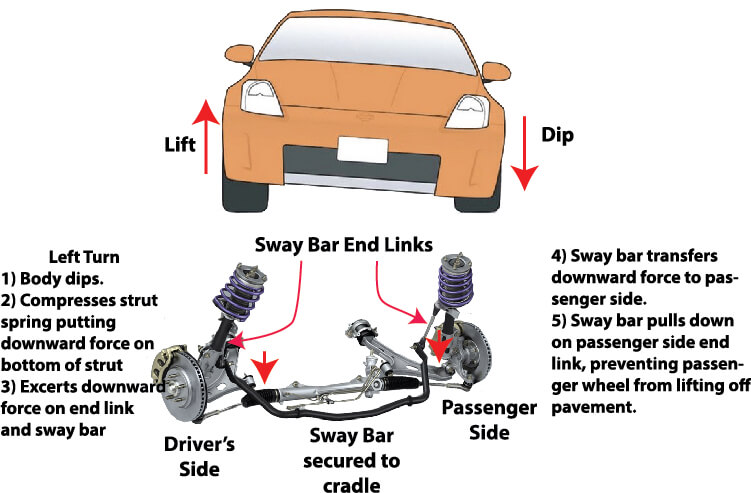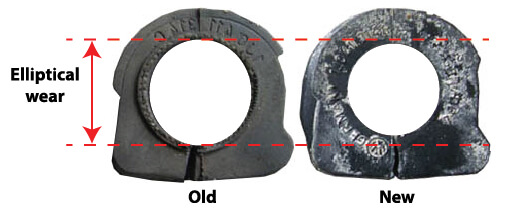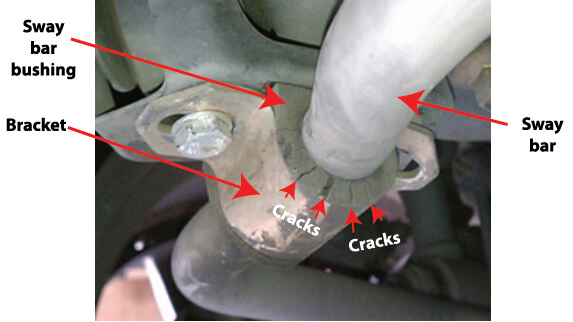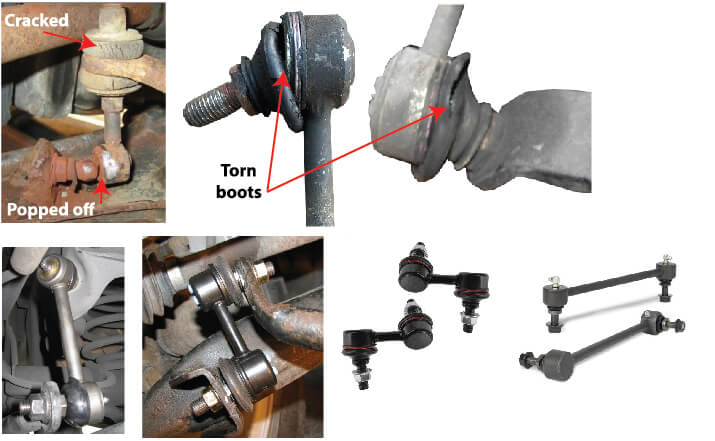Sway bar and end links
What is a sway bar and why does each end have an end link?
A sway bar, also called a stabilizer bar, controls side-to-side vehicle body movement and increases the vehicle’s roll stiffness. It’s a “U” shaped rod made from spring steel that attaches to the wheel on each end of the axle. The spring steel allows the sway bar to flex as the vehicle takes a turn. If it didn’t flex, the driver would feel every bump because the sold steel sway bar would transfer the impact from one wheel directly to the opposite wheel.
So its torsion spring effect actually smooths the ride slightly. As you make a left turn, the body weight shifts to the left, forcing the left front body to dip. The weight shift causes less weight on the passenger wheel and changing center of gravity, which can lift the passenger wheel off the pavement. Without it, a 25-mph turn would produce as much body movement and weight transfer as a 45-mph turn.
In addition to provide passenger comfort it also prevents excessive camber and toe changes. So an operable sway bar with operational end links and bushings actually reduces premature tire wear.
Here’s how the sway bar and end links reduce body roll

Sway bar operation and how it reduces body roll in turns
Here’s how bushings and end links wear
The bushings secure the sway bar to the car frame or engine cradle, yet allow the bar to rotate slightly. The bushing also cushion the impact when hitting road bumps and pot holes. Over time, the rubber bushings harden, crack and wear in an elliptical pattern.

Old and new sway bar bushings. Notice the elliptical wear pattern in the old bushing. This wear allows the sway bar to move up and down in the mounting bracket

Sway bar bushings showing age related cracks
What goes wrong with end links
End links fail from normal wear, oil damage, torn boots and impact. See these examples of damaged and new end links.

Old and damaged sway bar end links and new units
Symptoms of worn or damaged sway bar bushings and sway bar end links
• Clunking noise when going over bumps. Worn sway bar end link noise is most noticeable as when turning into a driveway when body weight shifts on one wheel.
• If the end link has a rubber boot and the boot is intact, the end link may still be worn enough to make noise, even though there’s no play when trying to move the joint.
• Worn end links can make the same sound as a worn strut mount. To eliminate the end link as the source of the noise, remove the end link and drive over the same bumps.
©, 2017 Rick Muscoplat
Posted on by Rick Muscoplat
